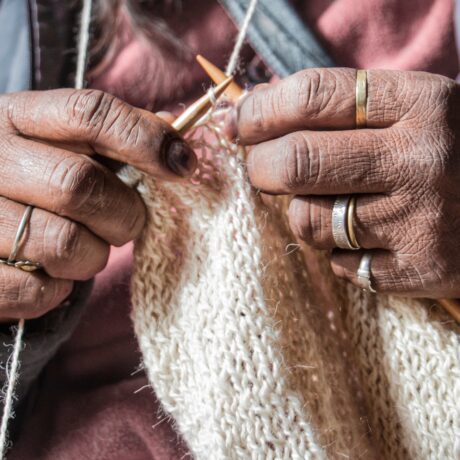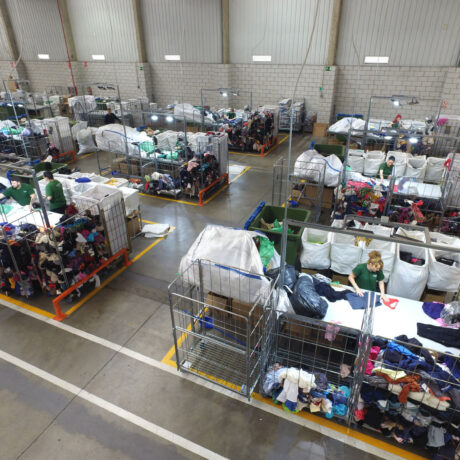Ecuadorian Ikat Weaving Recognised by UNESCO
Yesterday, in the small town of Gualaceo, Azuay, in Ecuador, the art of ikat weaving was officially recognised by UNESCO as intangible cultural heritage.
Intangible Cultural Heritage is a term used for knowledge, traditions and rituals which permeate the everyday life of a community, are passed down through generations and form an intrinsic part of their identity and culture. The skills are essential to the cultural identity of the community and the cloth is both practical and richly imbued with symbolic meaning.
Other forms of cultural expression which have already received this designation include Chinese acupuncture, Spanish Flamenco and, also in Ecuador, the art of Panama hat weaving. Whilst Material Cultural Heritage is clearly visible, the concept of Intangible Cultural Heritage is harder to understand as it embodies an art or a skill of great value to the country, often one in urgent need of safeguarding. Ikat weaving is a skill which is sadly in danger of extinction if steps are not taken to preserve it, and so its designation by UNESCO is hopefully a step to greater recognition of its importance nationally, as well as internationally.

Ikat is a Malay-Indonesian term, which is common to many cultures around the world, including Argentina, Bolivia, Ecuador, Guatemala and Mexico. Ikat is a resist technique where a resist to the dye, traditionally cabuya cactus fibre in Ecuador, is tightly wrapped around the warp before dyeing the yarn to create a pattern that will appear later during the weaving. It is a rare technique as the pattern needs to be held in the weavers head to ensure that the wrapped parts of the warp will translate into the correct pattern on the loom.
In the 25 years since I first visited Ecuador, natural dyes have all but died out in the country. On my first trip it was normal to see people dyeing wool with cochineal, indigo or nogal (walnuts). On my last visit to Gualaceo, I was delighted to see that a variety of natural dyes were still being used by the ikat weavers.

Traditional backstrap looms are still used where the weaver sits on the floor, although for textiles over 75cm in width, a foot pedal loom is often used. The pedal loom I saw in Gualaceo was cleverly constructed from old bicycle wheels!
Ikat is extremely labour intensive and requires considerable experience to memorise the complex patterns which need to be tied into the warp and which, when combined with the weft, magically transform into a pattern. According to one weaver, there are only around 15 ikat weavers left in the Gualaceo region.
In Ecuador, it is commonly known as a macana and the shawls which have long been a part of traditional dress are called Paños de Gualaceo. For centuries, the macana or paño de Gualaceo has been a key element in the traditional dress of the women in Azuay province, alongside the Panama hat, an embroidered blouse and two skirts, including an undergarment whose lower embroidered edge shows underneath the outer pleated skirt. Increasingly, I see a generational divide. In Sigsig where we work, very few young women wear traditional dress.
The three weavers pictured below are part of our Panama hat weaving association. I bought a whole roast pig for our group of 160 weavers in celebration of Panama hats being recognised by UNESCO as Intangible Cultural Heritage in December 2012.
The ikat shawl is not only beautiful and part of the rich textile heritage of the region, it is also an incredibly practical accessory. Women use it to carry their purchases home from market, or they carry their baby on their back. This mother, part of Pachacuti’s weaving association, is selecting straw for weaving her hats for the following week whilst keeping her child secure on her back.
One significant change in men’s dress in Ecuador over the past 50 years has been the disappearance of ikat ponchos, echoing the disappearance of this traditional textile technique. In the 1940s both wool and cotton ikat ponchos were worn in a traditional indigo blue and white. In the late early ’90s, indigenous Otavalan men dress underwent a Western revolution, partly due to the money pouring into the region as a result of the popularity of Ecuadorian chunky knitwear. With more disposable income, many men opted to exchange their white pleated shirt, white cotton trousers, alpargata shoes, poncho and felt hat, for jeans, trainers and a T-Shirt.
In addition to the near disappearance of ikat in traditional dress in Ecuador, its popularity has declined globally due to the prevalence on the high street of cheaper clothing with an ikat print. These garments are often called ikat by the brands who do not distinguish between a piece of cloth taking hours to weave by hand and embodying an incredible degree of skill and knowledge and a piece of cloth woven on an industrial machine.

In an article on cultural appropriation Refinery 29 recommends:
So, instead of going to a mall store and paying $7 for a cheap knock-off, go to the source. Know the story behind the piece, know the artist, what tribe they’re from, why the specific designs were used. It puts the power back in the hands of the marginalized group. Importantly, buying from a Native person or company also economically benefits the artist and the tribe, rather than a company that’s knocking off their designs.
In other word, make sure you know #whomademyclothes. Buy clothing with integrity, with a story, with a face behind it.
Hopefully the new UNESCO recognition will help to safeguard this dying skill and ensure it plays a part in the future textile heritage of Ecuador.
To find out more about intangible cultural heritage in need of safeguarding, visit UNESCO .










